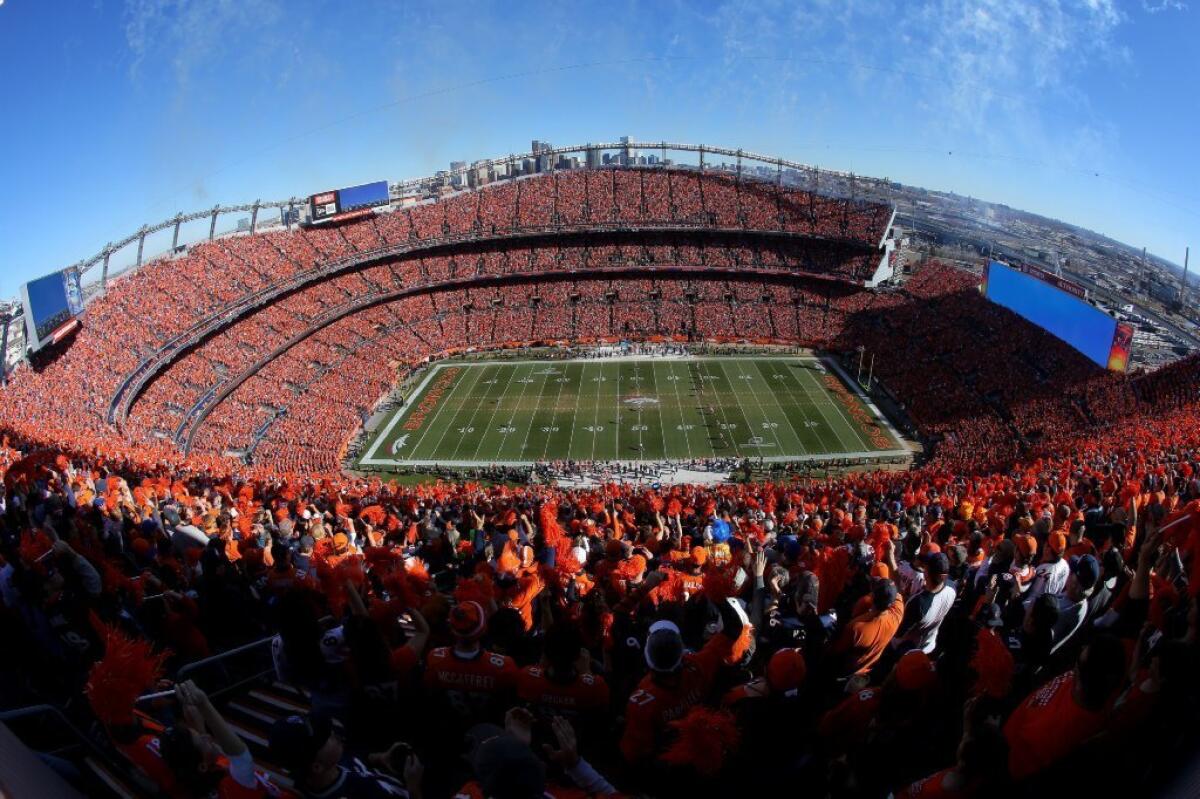NFL concussion rates are lower at higher altitudes, study finds

- Share via
Here’s one solution to the National Football League’s concussion problem: Stop playing at sea level.
Researchers have found that concussion rates are about 30% lower in games played at higher altitudes.
The finding was based on an analysis of all 300 concussions reported during the first 16 weeks of regular-season NFL games in 2012 and 2013. (Week 17 data were not available, since only playoff-bound teams release them.)
For every 10,000 times a player suited up, there were 64.3 concussions. But that figure varied with elevation.
The concussion rate at the 24 stadiums situated less than 644 feet above sea level was 70 per 10,000. At the nine stadiums higher than that, it was 49.4 per 10,000. The nine stadiums — in ascending order — are in Indianapolis; Pittsburgh; Charlotte, N.C.; Orchard Park, N.Y.; Kansas City, Mo.; Minneapolis; Atlanta; Glendale, Ariz.; and Denver.
The study, led by researchers from Cincinnati Children’s Hospital Medical Center (in a low-altitude city), appears in the current issue of the Journal of Orthopaedic and Sports Physical Therapy.
Researchers used 644 feet as the dividing line between high- and low-altitude stadiums based on a 2013 study of high school football players. That study, which looked at more than 6,000 concussions, found nearly the same correlation between altitude and head injuries.
At 5,192 feet above sea level, only Denver’s stadium — Sports Authority Field at Mile High — is normally considered a high-altitude destination. But even at far lower elevations, atmospheric levels of oxygen are significantly lower than at sea level. That increases blood flow to the brain and pressure inside the skull.
The increased pressure may protect against concussions caused by a phenomenon known as “brain slosh.” When the head is subjected to sudden accelerations and decelerations, the brain, skull, blood and spinal fluid move at different rates because their densities vary.
Higher pressure, according to this hypothesis, essentially creates a tighter-fitting brain that is less prone to damage.
Head-ramming sheep and woodpeckers naturally have such protection, allowing them to withstand collisions much more forceful than those that cause concussions in people.
The researchers were unable to control for the use of supplemental oxygen by players off the field, which could change intracranial pressure. They suggested that could explain why Denver, where the use of supplemental oxygen is most common, did not have the lowest concussion rate.
[For the Record, 9:45 a.m. PST Feb. 6: An earlier version of this post stated that the study authors were from the University of Cincinnati. Their primary affiliation is with Cincinnati Children’s Hospital Medical Center.]
Twitter: @alanzarembo







